What is minimalism, is it something we should aspire to? If so, how might we apply that in the world of e-learning. In the first of a series of blogs on minimalism, Callie Massey explains what minimalism is, and isn’t, and references what it might look like in a relation to digital learning content.
‘What is minimalism?’
Behold,
some typical responses
- ‘It’s about getting rid of all your stuff, right?’
- ‘It means I can’t buy things unless I really,
really need them.’ - ‘It means you can’t have a car or a TV…plus I’d
probably have to change my corporate job.” - ‘It’s something vegan hipsters do to their homes.’
- ‘Clean lines, no clutter…that sort of thing.’
(for further insight, check out Courtney Carver’s more
extensive list of misconceptions):
Let’s dig a little deeper…
Traditionally
originating from the post WW2 art movement, the meaning of the term
‘minimalism’ has been modified in various ways throughout time. Artists,
architects, film makers, writers and musicians have provided us with various
takes on the concept through their individual expression of it.
Underlying
each interpretation, however, a few constants remain. Each embodies a rejection
of the mainstream; a purposeful stripping back to a simple aesthetic that
resembles nothing more than its own reality and inherent purposefulness.
On a way of living…
More
recently, the term has evolved in mainstream culture to define a way of living.
A plethora of lifestyle blogs on the topic, widespread subscription to podcasts
such as The Minimalists and Netflix’s
monetising of Marie Kando’s The
Life-changing Magic of Tidying are all indicative of its
pervasiveness as a movement.
The
fluidity of minimalism’s definition is fitting, since, to some extent, the term
derives its meaning from how it’s interpreted by those who classify themselves
as minimalists. As Leo
Babauta, self-confessed minimalist and author of zen habits, observes, ‘There are no set
rules. There’s no one way. What I suggest for living minimally isn’t what
someone else would recommend, nor is it how you would live your minimalist
life.’
However, in treading
their own minimalist path, some have been criticised on the basis that they are
just buying into the latest fad. The notion that minimalism might be the
preserve of the rich is distasteful indeed. It’s with an uncomfortable mind that
one pictures the kind of person who, in some attempt to convey their
virtuousness as an antithesis to mass consumerism, brags about their expensive choice to be a
minimalist in a world where many find themselves in a position of lack, through
no choice of their own.
In their defence, however, Josh and Ryan propose that we should be wary of flippant dismissal of the movement as being without substance; ‘Minimalism is a lifestyle that helps people question what things add value to their lives.’ Colin Wright, traveller extraordinaire and owner of just 55 possessions concurs that minimalism should be embraced as a philosophy, adding, ‘What Minimalism is really all about is reassessment of your priorities so that you can strip away the excess stuff – the possessions and ideas and relationships and activities — that don’t bring value to your life.’
Minimalism in e-learning
In
Cathy Moore’s book Map it, she outlines a
scenario in which two instructional designers are faced with the same job
remit:
The
client, Harold, wants an online course about sharps safety for hospital
workers. Everyone who is supposed to take the course is an adult with some
experience working in a healthcare setting or who at least has seen the inside
of a doctor’s office.”
The
client hands over a deck of slides (containing, according to the client,
everything the learners need to know) from the course that’s’ being phased out,
and asks for it to be turned into an online training course.
Cathy
goes on to describe the two IDs’ different responses to it to illustrate how
action mapping works to provide a solution which effects behaviour change.
While I dare say that minimalism probably wasn’t on Cathy’s mind at the time,
it’s interesting to note that the solutions she puts forward as desirable do
actually embody some key minimalistic themes.
By
way of explanation, here’s a summary table:
*Caveat:
in the book, Cathy makes the disclaimer herself that the scenario is
simplified, and, in recognition that the (over?) simplification that follows
may be too reductionist, I would urge you to read the book and decide for
yourself*
| ID#1 Belief and Response ‘My job is to create a course’ | ID#2 Belief and Response ‘My job is to solve a problem’ | How this relates |
| Turns the existing 97 slides into 130 slides (in order to text density). Produces a long script so the course can be narrated in its entirety. | Identifies that the course being phased out was unsuccessful. Redefines the course’sgoal as achieving a measurable behaviour change. Identifies what particular behaviour need to change understanding the learners’ daily behaviours and common errors. | Becoming a minimalist is often misinterpreted as being a one-off, colour-by-numbers course of action. Yet it involves a complete reframing o how all situations are perceived – this involves the kind of curiosity displayed by ID #2, as opposed to the blinkered view of doing things in the standard way set out by ID#1 On face value, ID#1’s approach to reduce text on each slide may appear to be minimalistic in its attitude. Yet it reminds me of when I was a child and my un-minimalistic parents would declutter one room by shoving its contents into another or redistributing it throughout the rest of the house! |
| Tells learners why the topic is important and peppers this with scary facts and statistics | Provide scenario- based challenges which encourage the learner to take ownership of decisions and their consequences Incorporates authentic workplace procedures, documents, signs and aides that learners currently show little regard for. | To voluntarily commit to a movement such as minimalism involves introspection and individualised meaning-construction like that encouraged the approach taken byID#2 Learning is active in nature, and not a passive, prescriptive process like that proposed by ID#1 |
| Breaks information up into click-to-reveal interactions, HOW-TO lists, DOs and DON’Ts and bulleted information. | Presents necessary information in the form of post-scenario feedback. Enables further information to be accessed at the will of the learner. Exposes learners to just what it relevant and useful for them to fulfil their job role. | An aspiring minimalist may invest in a trendy, white designer cabinet to disguise their stash of junk. Yet this would be inherently flawed -a true minimalist wouldn’t need a repository for their useless items as they wouldn’t own them in the first place. An analogy might be drawn between such a cabinet and an elaborate click to reveal interaction – it won’t take the average discerning learner long to realise that it is just a gimmicky attempt to distract them from the fact that they are being presented with a superfluous information dump (in Cathy Moore’s terms), albeit in bite-size form. ID#2 has realised that by honing information down to what is relevant/essential and embedding this in a meaningful way will carry much more educational clout. |
| Tests understanding through interspersed knowledge-check questions which are based on what the learner has just seen. Summative assessment is made up of similar questions. | Encourages experimentation by informing learners that, initially, their performance is not being tracked. Summative assessment is challenging and, if learners don’t pass, they are guided to appropriate further study before retaking. | As already established, taking a didactic approach to minimalism is unlikely to be fruitful, since the onus is on the aspiring minimalist to figure out what works for them. ID#2’s approach is more in keeping with minimalist principles since it is exploratory in nature. |
Outcomes
In terms of outcomes of the two approaches, learners following ID#1’s path appraised the course as being satisfactory to good, yet no evaluation was done in relation to whether or not the training had led to a behaviour change.
In ID#2’s cohort, a behaviour change was identified and further practice was then planned in to increase the likelihood of this change being permanent.
To draw a final minimalism analogy, while a one-off decluttering process might be evaluated as a success in its own right (similar to ID#1 course completion), it is not a precursor to behaviour change. Just because you know how to declutter a room – and can see the benefit in it – does not mean you have the attitude it takes to maintain a clutter-free house. ID#2’s solution, on the other hand, did incur a measurable behaviour change. They achieved this by honing in on what was really relevant and valuable, and removing all the superfluous information in advance so the learners were faced with only the essential. This avoided the problem of overwhelm, and equipped the learners with the tools they needed to improve performance going forward. Adding in spaced practice is a nod to the notion that committing to lasting change – like converting to minimalism – is an evolutionary process, not a one-off event.
Over the coming month or so, we’ll be posting a series of shorter blogs on the topic of minimalism. These will relate to specific aspects of e-learning and how we incorporate minimalistic principles into our daily working lives.
In the meantime, though, I’ll leave you with this:


